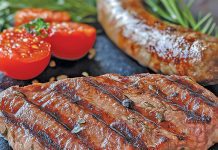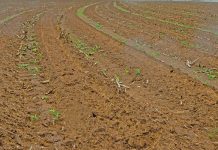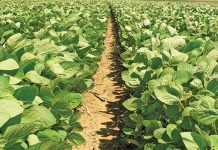
Photo: Bill Kerr
Very often, imported seed comes with a polymer coating that can be in a range of colours. The seed is often treated with products to control diseases and pests. However, the seed often also arrives without being treated, leaving it up to the grower or seed company to perform their own choice of treatments.
One good reason to apply a polymer is so that the seeds are visible in the trays, which makes it easy to see whether the sowing machine is not causing misses. I had clients who required me to apply polymer for this very reason, and it was easy to do.
I got the required amount of polymer and water for a container of seed, put it in a plastic bag and shook it until all the seeds were coated, and then placed it on bags to dry in the shade.
Hot-water treatment can be used to eliminate pathogens from infected seed.
In the case of Brassicas, I use hot-water treatment for clearing black rot and black leg pathogens from the seed.
An important part of the procedure involves using a dairy thermometer to check the temperature. The temperature is brought up to 51°C, and there should be a container of cold water and a kettle of hot water on standby.
Sticking to the procedure
The seed is placed in the water and stirred with the thermometer in the pot. As time passes, the temperature will start to drop, so you should add a little hot water from the kettle to raise it again. If there is too much hot water in the pot, you can add a little cold water to bring the temperature down to the correct level.
After 25 minutes, the seed is poured through a sieve and then cooled off under cold running water. The seed is then placed onto sheets of newspaper, spread out and left to dry in the shade. If the seed is sown when dry enough to handle, germination will be rapid.
Capsicum (the pepper genus) can be treated for pepper mild mottle virus, which is seed-borne. Many hybrids have resistant genes, but there is always a risk when a variety is not resistant. The virus is so easy to eliminate that it is not worth taking a chance.
Trisodium phosphate
Make a 10% solution of trisodium phosphate in water and soak the pepper seed for two hours. Next, rinse it for 20 minutes. Put the seed in a container placed at a slight angle and allow water to enter at the top and spill out from the lower end. A very destructive disease called bacterial spot can also be present in pepper seed.
Some years ago, there was an excellent open-pollinated variety of pepper that was widely planted. One year, some of the seeds were contaminated and the disease spread to other varieties.
It is difficult to get the spread under control once the land is infected, and as a result the variety faded from the market. All this could have been prevented by treating the seed with hot water at 51°C for 30 minutes. Many hybrids now have resistant genes.
Tomato seed can be treated for bacterial diseases in hot water at 50°C for 25 minutes.
Bacterial spot, bacterial speck and bacterial canker can be very destructive, especially in certain weather conditions. These diseases can linger on crop residue and equipment and are best kept at bay by treating the seed.
Bill Kerr is a vegetable specialist and breeder.












